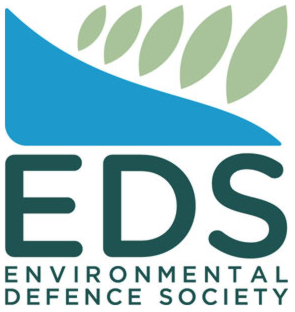Government plans for drinking water and wastewater services delivery could spell the end of Kaipara District Council Mayor Craig Jepson says.
“That’s one of the fears," Jepson said.
His comments come as Kaipara District Council (KDC) consults on the future of its water services.
Councils have until September 3 to confirm their regionally-generated plans for managing drinking water and wastewater with the Government.
It is part of the Government’s new Local Water Done Well push, which replaces the previous Government's controversial Three Waters regime.
Jepson said whichever LWDL option KDC went with, the district's drinking water and wastewater services would be split off the council books.
This would reduce debt, but it would also mean the loss of essential income.
Council staff will also be separate into any new organisation.
Water service assets make up 18% of KDC’s assets.
KDC was one of New Zealand’s smallest councils and it wouldn’t take much after separating off its waters functions for the Government to push for amalgamation, Jepson said.
“I’m definitely not in favour of that, communities are best served by local councillors.”
Kaipara, Far North and Whangārei district councils must all come up with a water services delivery plan. Failure to do so risks Local Government Minister Simon Watts intervening.
Whatever happens, Northland’s roughly 80,000 ratepayers face major rates hikes and debt increases for water services.
The three councils are asking their communities about preferred water delivery options with consultation ending in early May. They will then work to finalise required plans by September.
Jepson said $240 million would have to be spent on his council’s water infrastructure over the next decade under the new water reforms.
In a March meeting agenda, KDC chief executive Jason Marris said if the council's water service delivery options did not work, KDC would write to the Local Government Minister informing of "KDC’s constrained financial position, requesting support to achieve a financially sustainable water and wastewater services model”.
KDC is officially promoting an inter-council Northland organisation with the Far North and Whangārei district councils as its preferred water services delivery option.
This is among three in its public consultation ending on May 7.
However, the Government’s tight LWDW timeline means this preferred public consultation option is not on the whole, its first choice.
KDC instead primarily wants to work with Auckland Council but that council’s not up for doing so until September as it works through the implications of “divorcing” from its own water services organisation Watercare. Region's water service plans must be with the Government by then.
KDC working with Auckland Council - rather than its Northland counterparts - would potentially have significant Northland-wide local government impact.
Jepson said KDC was best suited to joining Auckland Council for its waters delivery, to achieve economies of scale.
Auckland Council told KDC it was firstly focused on the best outcomes for its 1.5 million residents as its Watercare transition happened.
Meanwhile, the second option in KDC’s official public consultation is an upgraded in-house model, even though that’s not financially viable. A shared service contract model with Whangārei, and possibly the Far North councils is its third option.
KDC LWDW community meetings will be held on Monday (SUBS: April 14) in Dargaville and Mangawhai , on Wednesday (SUBS: April 16) in Matakohe and on April 23 in Mangawhai.
Far North District Council
However, Far North District Council is not primarily in favour of joining other Northland councils for its future water services.
Its preferred choice for public consultation is Te Pēke, a strengthened in-house model that would see the council continue to manage its water services internally, retain local oversight and decision making while improving infrastructure and meeting new standards.
A three-council Northland water services organisation, it calls Te Kete, is FNDC's second choice, creating a joint organisation between the Far North, Kaipara and Whangārei.
It says this model could provide regional benefits such as shared governance, better investment capacity, improved operational efficiency and greater resilience.
Information about the FNDC changes was sent to iwi ahead of the council’s public consultation that ends on May 4.
FNDC community pop-ups will next be at Te Ahu service centre in Kaitāia on Wednesday (SUBS: April 16) and FNDC in Kaikohe on April 23.
Whangārei District Council:
Meanwhile, Whangārei District Council’s preferred LWDW option is to keep to itself.
The council says linking up with KDC and FNDC in a joint regional model will force Whangārei’s ratepayers into unfair cross-subsidisation. It would potentially offer its services to the other councils under this choice.
WDC infrastructure committee chairman Simon Reid said the preferred in-house business unit option, featuring increasing collaboration with other Northland councils, would see its councillors responsible for the unit’s performance.
Reid said combining water services delivery into a Northland councils’ CCO brought cross-subsidisation for Whangārei’s 45,700 ratepayers.
“While this option would continue to provide a high level of service delivery, Whangārei district would end up cross-subsidising water costs for the rest of Northland and the CCO could carry higher amounts of debt,” Reid said.
WDC is Northland’s strongest-placed council and one of the best-placed in New Zealand when it comes to water services.
A joint inter-council CCO between Northland’s three district councils - for drinking water and wastewater only - is WDC’s second option in public consultation closing on May 2. Its next community meeting on this is in Hikurangi on Monday, April 14.
“Either way we know change is coming,” Reid said.
If established, a single Northland region-wide CCO would be responsible for the delivery of water services for all three districts – managing approximately 130,000 water connections.



 Gordon Campbell: On Why The US Stands To Lose The Tariff Wars
Gordon Campbell: On Why The US Stands To Lose The Tariff Wars SPCA: Huge Win With New Dog Tethering Regulations
SPCA: Huge Win With New Dog Tethering Regulations Community Housing Aotearoa: Ngā Wharerau o Aotearoa Says New Partnership Model Helping Ensure Right To A Decent Home Is Realised
Community Housing Aotearoa: Ngā Wharerau o Aotearoa Says New Partnership Model Helping Ensure Right To A Decent Home Is Realised Greenpeace Aotearoa: Babies At Risk Due To Nitrate-Contaminated Drinking Water In Ashburton District
Greenpeace Aotearoa: Babies At Risk Due To Nitrate-Contaminated Drinking Water In Ashburton District Driving Change Network: Response To Government’s Proposed Driver Licensing Changes
Driving Change Network: Response To Government’s Proposed Driver Licensing Changes The New Zealand Remembrance Army: Victoria Cross And Hardham Cup Come Together For First Time In Over 100-years
The New Zealand Remembrance Army: Victoria Cross And Hardham Cup Come Together For First Time In Over 100-years RNZ Online: How The World Reacted To The Demise Of The Treaty Principles Bill
RNZ Online: How The World Reacted To The Demise Of The Treaty Principles Bill


